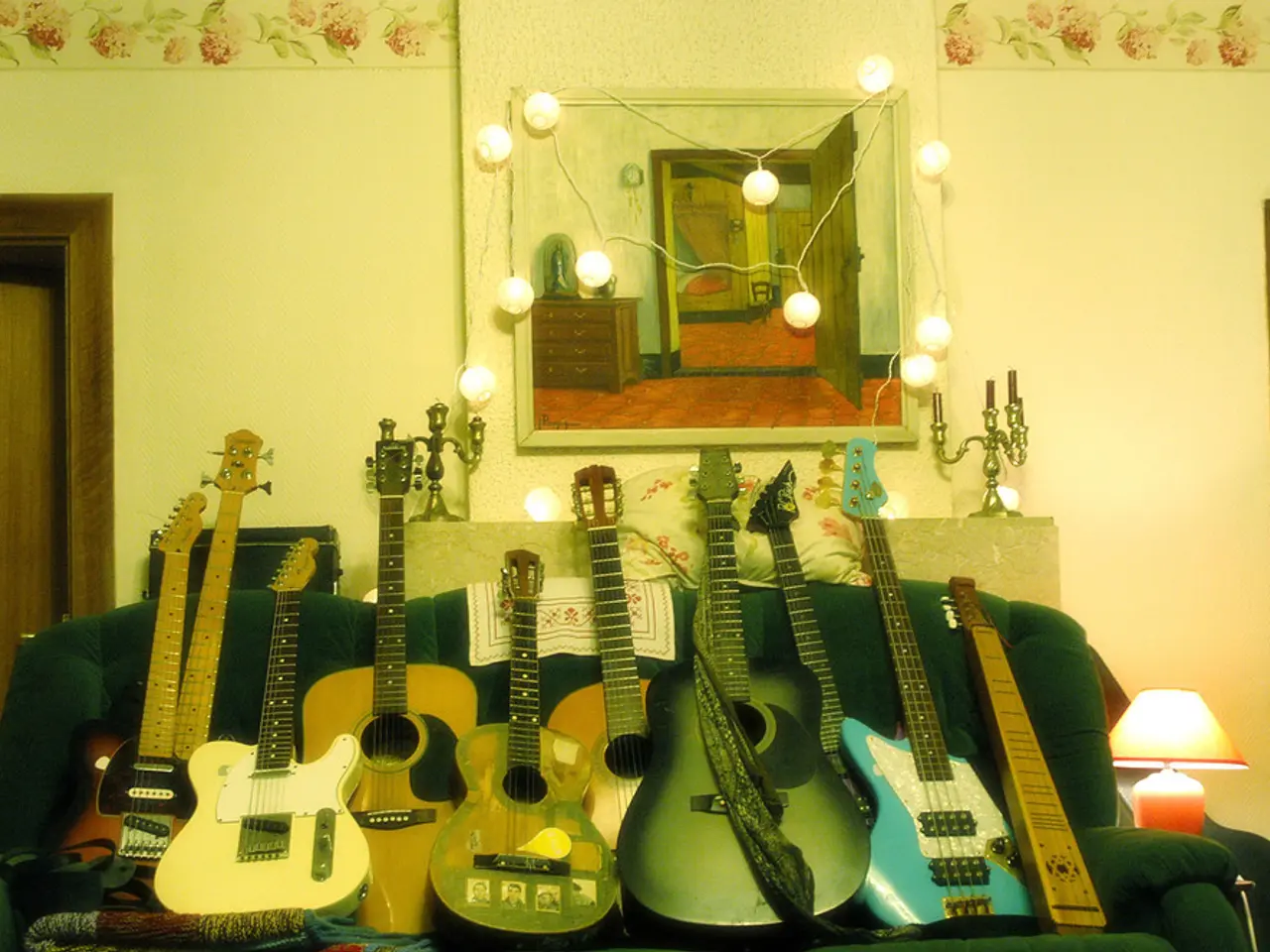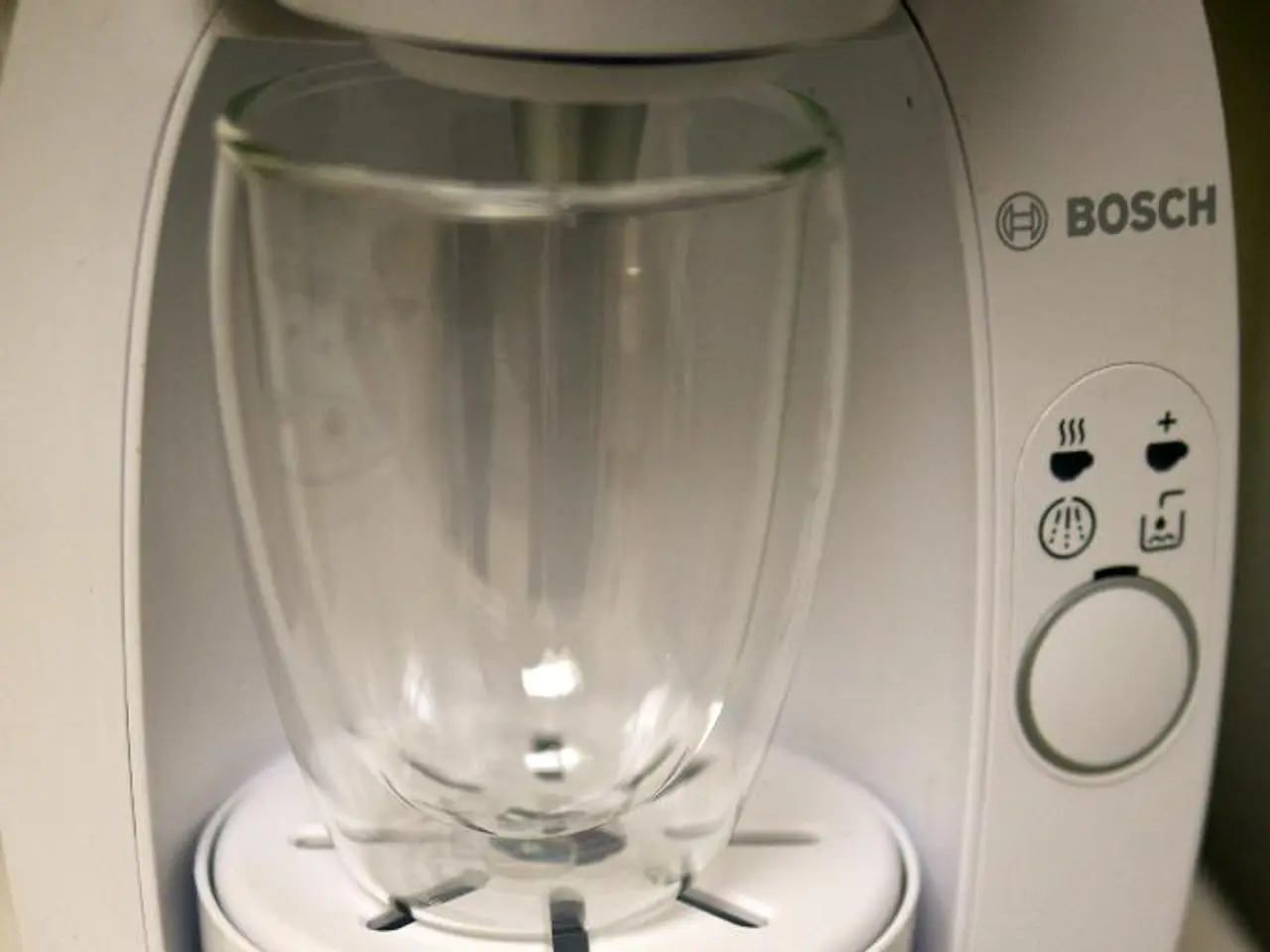Enhance Your Music Productions: Strategies for Maximizing Studio Monitor Performance
Creating a high-quality home studio setup requires careful attention to three key areas: proper placement, room acoustics, and connection considerations.
Proper Placement
Achieving accurate sound imaging is crucial when setting up your studio monitors. Position the tweeters so that they are at ear level when you are seated at your listening/mixing position [2][4][5]. Arrange the monitors and your listening position to form an equilateral triangle—each side meeting between 4 and 6 feet apart is ideal for nearfield monitoring [2][4][5]. Point the monitors inward towards your ears, not straight ahead, to enhance stereo imaging and clarity [4]. Avoid placing monitors too close to walls, as this causes bass build-up and muddiness. Keep some distance behind and beside monitors [2][4].
Room Acoustics
Controlling low-frequency build-up and standing waves is essential in small rectangular rooms. Use bass traps in upper room corners to address these issues [1][3]. Apply acoustic foam panels or sound absorbers on side walls, the ceiling, behind the monitors, and the back wall to absorb early reflections and reduce reverberation and echo [1]. Consider monitor isolation pads under the monitors to prevent vibration transfer to the desk or floor, improving sound clarity [1].
If you prefer a livelier room sound, use diffusers instead of absorbers to maintain some natural ambience while balancing acoustics [1]. The best room shape is usually a rectangular room with non-parallel walls or angled surfaces to minimize standing waves and flutter echoes [3].
Connection Considerations
Connect studio monitors to an audio interface using balanced cables such as XLR or TRS for reliable audio transmission and to reduce noise and interference [2][4]. An audio interface is recommended for professional sound quality and allowing multiple input/output connections if you record instruments or vocals [4]. Use powered (active) monitors where the internal amplifier is matched to the speakers for consistent sound; these only require input from your interface or mixer [4].
By combining these approaches—accurate and symmetrical monitor placement at ear level, acoustic treatment targeting bass control and first reflections, and quality balanced connections through an audio interface—you optimize your home studio for precise, clean, and reliable audio monitoring suited for mixing, mastering, or production [1][2][3][4][5].
Whether you're a beginner or a seasoned professional, following these best practices will help you create a studio environment that delivers accurate, balanced audio, enhancing your mixing and production capabilities.
- To ensure accurate sound imaging in your home studio, position the tweeters of your studio monitors at ear level and arrange them to form an equilateral triangle, with each side meeting between 4 and 6 feet apart.
- Improve sound clarity in your home studio by using monitor isolation pads under the monitors, absorbing vibrations transfer to the desk or floor, and choosing bass traps for controlling low-frequency build-up and standing waves.
- For reliable audio transmission and reducing noise and interference, connect studio monitors to an audio interface using balanced cables like XLR or TRS, and consider using an audio interface for professional sound quality and multiple input/output connections.
- Boost your home studio's acoustics by strategically placing acoustic foam panels or sound absorbers on walls, ceilings, behind monitors, and the back wall or using diffusers for a livelier room sound and maintaining natural ambience.



